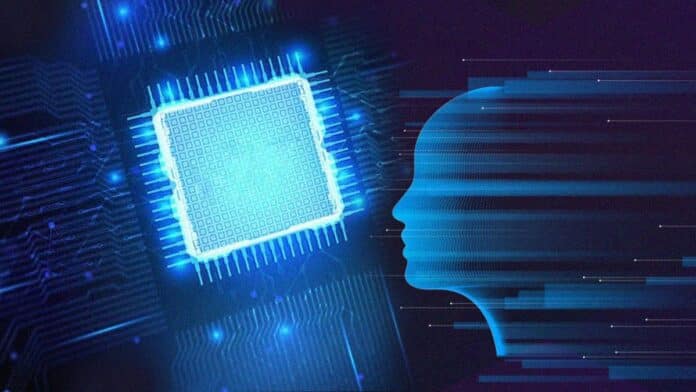The Internet of Things (IoT) has been the talk of the town for quite some time now. But have you ever heard of the “Internet of Bodies” (IoB)? It is a term that has been coined to describe the interconnection of human bodies with technology. The Internet of Bodies refers to the network of devices that are embedded in or attached to the human body, which are capable of collecting and transmitting data in real-time. This technology is a significant advancement that has the potential to revolutionize the way we live, work, and interact with each other. In this article, we will delve deeper into the Internet of Bodies, its applications, benefits, and potential concerns.
Contents
What is the Internet of Bodies?
The Internet of Bodies is the integration of physical, biological, and digital systems to enhance human capabilities and health. It involves the use of sensors, wearables, implantable devices, and other connected technology to collect and transmit data about our bodies in real-time. The data collected can range from vital signs like heart rate, blood pressure, and temperature to more complex data such as brain activity, muscle movements, and even emotions.
Applications of the Internet of Bodies
The applications of the Internet of Bodies are vast and varied, ranging from healthcare to sports, entertainment, and even military. Some of the most significant applications of IoB are:
- Healthcare: The Internet of Bodies has the potential to revolutionize healthcare by providing real-time monitoring of patient’s vital signs, medication adherence, and disease progression. This can lead to earlier diagnosis, more personalized treatment plans, and improved patient outcomes. For example, implantable devices like pacemakers and insulin pumps can be connected to the internet to provide real-time data to healthcare providers, enabling them to make more informed decisions about patient care.
- Sports: The Internet of Bodies can also be used to enhance athletes’ performance by collecting and analyzing data about their body movements, heart rate, and other vital signs. This can help coaches and trainers optimize training programs and prevent injuries. Wearable devices like smartwatches, fitness trackers, and smart clothing can also be used to monitor an athlete’s health and performance in real-time.
- Entertainment: The Internet of Bodies can also be used to enhance the entertainment experience by providing immersive virtual reality and augmented reality experiences. For example, wearable devices like haptic suits and gloves can provide users with a more realistic sensory experience while gaming or watching movies.
- Military: The Internet of Bodies can also be used to enhance military capabilities by providing soldiers with real-time data about their vital signs, location, and surroundings. This can help commanders make more informed decisions about troop deployments and prevent casualties.
Benefits of the Internet of Bodies
The Internet of Bodies has the potential to bring about significant benefits in several areas, including:
- Improved healthcare outcomes: Real-time monitoring of patients’ vital signs and disease progression can lead to earlier diagnosis, more personalized treatment plans, and improved patient outcomes.
- Enhanced performance: The Internet of Bodies can help athletes optimize training programs, prevent injuries, and improve their performance.
- Better entertainment experience: The Internet of Bodies can provide users with a more immersive and realistic entertainment experience.
- Enhanced military capabilities: The Internet of Bodies can provide soldiers with real-time data about their surroundings, leading to more informed decisions and better outcomes.
Potential concerns
While the Internet of Bodies brings about several benefits, it also raises some potential concerns, including:
- Security and privacy: The collection and transmission of sensitive personal data can lead to security and privacy concerns. Hackers can potentially gain access to this data, leading to identity theft and other malicious activities.
- Ethical concerns: The use of the Internet of Bodies raises several ethical concerns, including the ownership and control of personal data.
- Ownership and control of personal data: The data collected by IoB devices is highly personal and sensitive. There is a concern that individuals may not have full control over their data and that companies or governments may use this data for their own purposes.
- Informed consent: There is also a concern that individuals may not fully understand the implications of using IoB devices and may not give informed consent for their data to be collected and used.
- Discrimination: There is a risk that the use of IoB devices may exacerbate existing inequalities, as those who cannot afford these devices may be left behind.
- Misuse of data: There is a risk that the data collected by IoB devices may be misused for discriminatory purposes, such as denying individuals employment or insurance based on their health data.
Conclusion
The Internet of Bodies is a rapidly developing technology that has the potential to revolutionize several areas, including healthcare, sports, entertainment, and military. While there are significant benefits associated with the use of IoB devices, there are also potential concerns related to security, privacy, and ethics. It is essential to ensure that the development and use of IoB devices are guided by ethical principles and that individuals have control over their data. As the Internet of Bodies continues to evolve, it is crucial to balance the potential benefits with the potential risks to ensure that this technology is used in a way that benefits everyone.
Sources
- Albrecht, K. (2018). The internet of bodies: A survey of risks. Technology Science, 2018(1), 45-60.
- Kolkman, D. A., & Riva, G. (2019). Ethics of the Internet of Bodies: A mapping review. Journal of Medical Internet Research, 21(10), e14481.
- McKinsey & Company. (2019). The Internet of Bodies: What Could Happen When You Connect Your Health to the Internet.
- Schulz, W. L. (2018). The Internet of Bodies: Ethical and Legal Issues of Wearable Devices in Healthcare. AMA Journal of Ethics, 20(4), 308-315.
- World Economic Forum. (2021). What is the Internet of Bodies?
FACT CHECK: We strive for accuracy and fairness. But if you see something that doesn’t look right, please Contact us.
DISCLOSURE: This Article may contain affiliate links and Sponsored ads, to know more please read our Privacy Policy.
Stay Updated: Follow our WhatsApp Channel and Telegram Channel.












